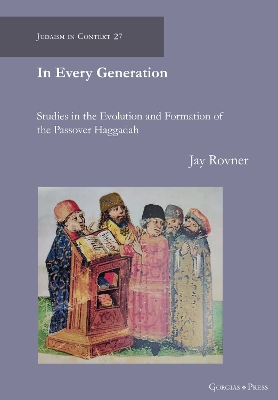Judaism in Context
1 primary work
Book 27
Studies in the Evolution and Formation of the Passover Haggadah
by Jay Rovner
Published 28 June 2022
The Passover Haggadah, the quintessential Jewish book, began taking shape in the period of the Mishnah and the Talmud (ca. 100-600 CE). Even by 600, it did not look like it does today. Major portions were wanting, e.g., the story of eminent sages at a seder in Bene Beraq; the typology of the four sons; the midrashic expansion of the story of the exodus; the song Dayyenu. Those compositions (mostly) or borrowings were incorporated into the Haggadah between ca. 600-900 (the Geonic period). Such selections completed the Haggadah, producing the book used at Passover Seders to the present day. This study shows how the section of the Passover Haggdah known as maggid (“recounting”) achieved its comprehensive structure and contents between ca. 600 and 900 CE (the geonic period).
